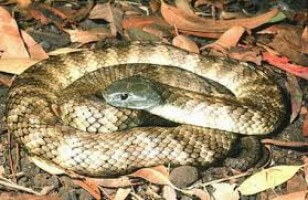It is not uncommon in the warmer months for our furry friends to come into contact with a snake. Even our more residential pets can still be at risk if walked near waterways or at the beach.
As snakes hibernate or are inactive during cold weather, snake bites usually occur in the summer months. Australia has a large number of venomous snakes but the tiger snake and brown snake (Dugite) account for the majority of snake bites in domestic pets around Albany.
FIRST AID:
If you suspect your pet has been bitten by a snake you should immobilise your pet and try to keep him/her as quiet as possible. It is vital that you take your pet to a veterinarian as quickly as possible. The sooner your pet is treated, the better their chances of survival.
Do not put yourself or others at risk by attempting to identify the snake. Individual species of snake can vary in colour and pattern considerably and are all but impossible to definitively identify other than by experienced snake handlers.
SIGNS OF SNAKE BITE:
Several factors will determine what sort of reaction your pet has to a snake bite. The type of snake (some species of snake are more venomous than others), the amount of venom injected (depends of the size and maturity of the snake) and the site of the snake bite are all contributing factors.
Dogs and cats are most often bitten around the head and limbs. Usually the closer the bite is to the heart the quicker the venom will be absorbed into the pet’s system and distributed around the body.
At the beginning of summer, when snakes first come, their venom glands tend to be fuller and their bites at this time are much more severe. The length of time since the snake last struck can also be a contributing factor.
The signs of snake bite by a tiger or brown snake are varied. They may show some or all of the following signs:
- Sudden weakness followed by collapse.
- Shaking or twitching of the muscles.
- Vomiting.
- Dilated pupils not responsive to light.
- Blood in the urine.
- In the later stages paralysis may occur.
VETERINARY TREATMENT:
Firstly your veterinarian will examine your pet, assess the clinical sign they are showing and determine the best course of action. Further diagnostic tests may be required to determine if your pet has actually been bitten. If the suspicion of a bite is high, treatment is recommended ASAP.
Veterinary treatment varies with each individual case, how severe the symptoms are and how rapidly the symptoms progress. Treatment usually consists of intravenous fluids and the administration of antivenom to neutralise the snake venom in the pet’s body. Some patients require multiple vials of antivenom.
Other supportive care may also be required – including oxygen supplementation and even breathing for the pet if they are not breathing well on their own. This needs to continue until the circulating antivenom has been neutralised and any bound venom has worn off.
If your pet is given antivenene for a snakebite, it is only being used to neutralise the snake venom in your pet’s system at that time. It does not protect your pet in future from further envenomation from a snake. Antivenene is not a vaccination or a preventative medication.
RECOVERY:
Approximately 80% of pets survive snake bite if treated quickly. The survival rate is much lower however for pets that are left untreated, and death can occur.
Recovery from a snake bite usually takes 24 to 48 hours if the pet receives prompt veterinary attention and the snake bite is not severe. However, some pets will take substantially longer to make a full recovery due to tissue damage to internal organs and will require intensive and prolonged nursing care.

